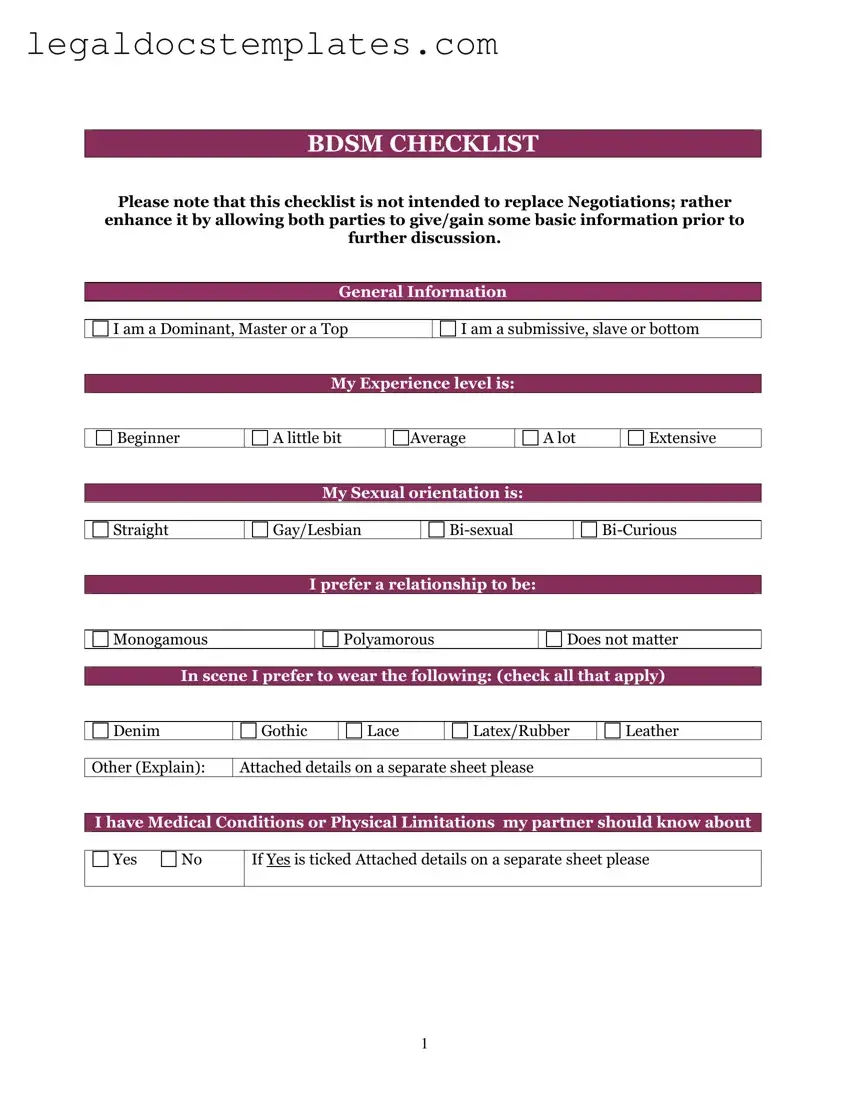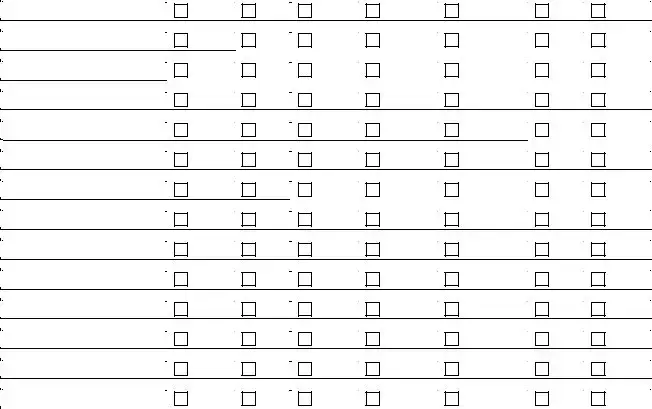One common mistake individuals often make when filling out the BDSM checklist form is not defining their limits clearly. The form is designed to help people communicate their boundaries, interests, and levels of comfort with various activities. However, if these are not clearly articulated, it can lead to misunderstandings between partners. It's essential for the safety and enjoyment of all involved that each person takes the time to accurately represent their preferences and limits.
Another mistake is overlooking the significance of negotiation and consent. Before any BDSM activities take place, it's crucial for all parties to discuss and agree upon what is on the checklist. Yet, some may fill out the form as a mere formality without recognizing its role in facilitating these important conversations. Consent is foundational in BDSM, and the checklist is a tool to ensure that consent is informed, enthusiastic, and ongoing.
There's also the mistake of not updating the checklist regularly. People's interests, limits, and comfort levels can change over time. What was once a hard limit might become an area of curiosity or vice versa. Failing to revisit and revise the form can lead to scenarios where activities no longer align with someone's current preferences, potentially leading to discomfort or harm.
A fourth issue arises when individuals do not use the checklist as a starting point for deeper conversations. While the form can guide discussions about activities and limits, it shouldn't replace more nuanced conversations about fears, expectations, and experiences. These discussions can provide valuable context and help partners understand each other better, leading to a more fulfilling and safe BDSM experience.
Another common misstep is not being truthful when completing the form. Some may feel pressured to seem more experienced or open than they are, or they might understate their interests out of fear of judgment. This lack of honesty can hinder the trust and communication that BDSM requires. It's vital for individuals to accurately represent their experience level and interests to ensure activities are safe, consensual, and enjoyable for everyone involved.
Lastly, there is the mistake of not considering the form as a living document. The BDSM checklist is not meant to be static. It should evolve as individuals learn more about their desires, limits, and BDSM itself. Viewing the form as unchangeable can discourage people from exploring new activities or reevaluating their limits, inhibiting growth and exploration in their BDSM journey.






